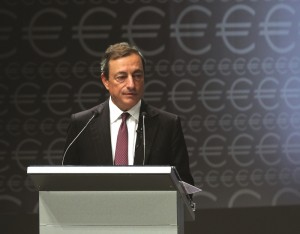How low can you go?
Correction? What correction? The Ides of March seem a long time ago now, with the underperformance of deals for the likes of KBC and Santander now looking likely to go down as a footnote in the history of the AT1 market rather than a dramatic turning point.
Witness the enthusiasm for the first AT1 transaction from Germany, a Eu3.5bn equivalent transaction for Deutsche Bank two months later, on 20 May, that was not only the largest transaction for the young asset class, but at the time the tightest yet across currencies. Can 600 investors placing 1,400 orders for Eu25bn equivalent be wrong?
Indeed, the market has only tightened since then. Credit Suisse, for example, on 11 June priced a $2.5bn 6.25% perpetual non-call 10.5 AT1 that had the lowest coupon for such a maturity structure in any currency and the tightest spread against mid-swaps for any AT1.
It did so on the back of a package of measures from the European Central Bank on 5 June that included a negative deposit rate, TLTROs and the promise of more. Whether or not this was Super Mario pulling out his big bazooka, it certainly gave credit markets renewed momentum, while across the pond Yellen’s Fed has held off hitting the brakes.
Where will it all end?
Bears might point to the ECB’s next act, the results of the asset quality review. More likely, this could provide an excuse for profit-taking, particularly over the quiet summer months. However, any pause in supply may only serve to provide a platform for an autumn resumption of the rally.
Cassandras might then find their patience more sternly tested than ever. Some investors have already marked out lines in the sand: 5% and no further when it comes to AT1 coupons. How realistic such a stand will be in a world where even euro high yield indices trade at a paltry 3.5% remains to be seen.
Neil Day Managing Editor
